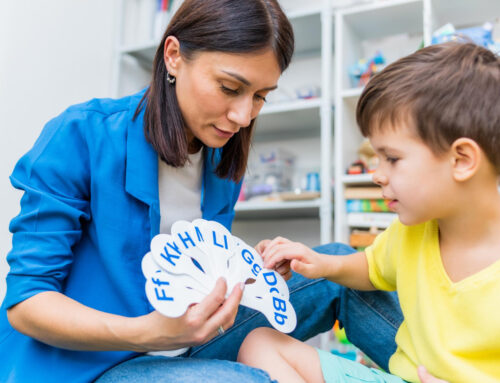Do you want to know a great way to help shape your child’s behavior & attitudes? Negative Reinforcement is one of the most effective strategies for parents in teaching kids how to make better choices. Although Negative Reinforcement might sound intimidating, it can be effective in parenting & childcare.
It works by withholding or removing something a child desires if they do not comply with rules, allowing them to learn from the consequences of their actions. However, negative Reinforcement must be used correctly – as even the best intentions can sometimes backfire.
This blog post will explore various factors related to Negative Reinforcement, including what it is, the difference between Reinforcement & Punishment, what Positive Punishment is, the benefits of Negative Reinforcement & how to use it effectively & much more.
Join us on our journey of discovery as we explain how negative Reinforcement can work wonders!
Understanding Negative Reinforcement

Think back to when your children made their own bed for the first time or when they showed tantrums & refused to eat vegetables. How did you react?
Did you praise them in both scenarios, scold them, or simply turn away? What processes do you typically use to respond appropriately during such events? On top of that, do you ever contemplate how your words & actions could shape your child’s behavior patterns over time?
For years, parents & teachers have utilized positive & negative reinforcement strategies without even realizing it as they strive to evoke excellence from within our young ones.
Positive Reinforcement
Positive reinforcement is an incredibly effective form of behavior regulation that builds on existing conduct or establishes new habits by complimenting the child, thus raising the chance of desired behaviors.
But how does negative reinforcement compare to positive? Contrary to popular belief, while they may vary in some ways, both strategies strive for a common purpose – increasing the possibilities of desired actions!
Now, let’s dive deeper into what distinguishes negative reinforcement from its counterpart.
Negative Reinforcement
Have your children ever cleaned their room solely just to avoid your nagging? Yes, this is an exemplary instance of negative reinforcement.
Negative reinforcement occurs when something disagreeable or irritating is removed to enhance the probability of a desired behavior.
Kids want to get rid of nagging & thus, they do what needs to be done; subtraction of something uncomfortable—in this example, it’s nagging—results in wanted actions from them.
Similar to positive reinforcement, Negative reinforcement is a practical approach to behavioral modification, seeking to build or modify behaviors by removing undesired activities & reactions. As a result, there’s more chance that desired behavior will be seen.
Examples of Negative Reinforcement
Here are some real-life examples:
- Letting the car behind you pass to avoid honking
- Rising from bed before your alarm starts blaring
- Consuming an antacid before indulging in a spicy meal
- Applying sunscreen before going out into the sun so that you won’t burn
- Departing early from home to evade traffic gridlock
Here are a few examples of negative reinforcement in the classroom:
- A weekend free from homework assignments if students act nicely in class
- Exemption from extra classes for those who obtain good grades in exams
- An end to the code of silence in the classrooms when everyone completes their respective tasks
- Studying for any exam to avoid getting unsatisfactory grades
- Skipping early morning practice sessions if they perform well during sporting matches
Reinforcement & Punishment: Similarities & Differences
Mainly there are two kinds of reinforcement:
- Positive reinforcement: adding an element raises the possibility of the expected behavior.
- Negative reinforcement: removing an element increases the probability of the expected behavior.
The main thing to note is that both strategies strive for the same goal of increasing desired outcomes.
It’s important to note that the contrast between negative & positive reinforcement does not lie in whether something is being added or removed but rather in how each strategy aims to enforce a desired behavior.
Despite common misconceptions among parents & teachers that deem negative reinforcement as punishment, it actually isn’t; instead, its goal is simply to increase the likelihood of desirable behaviors.
What Is Positive Punishment?

Now, it may surprise you that there are both positive & negative forms of punishment. Yes, that’s right, even punishment can also be positive or negative.
Let’s clear this out by understanding the basic terms:
- Positive = Addition
- Negative = Subtraction/Removal
- Reinforcement = Strengthening or increasing behavior
- Punishment = Weakening or decreasing behavior
One other significant term that is needed to be understood is stimulus.
- Stimulus is an external factor that affects our behavior, whether pleasant or unpleasant, internal or external.
Now, using these terms, we can easily define each of these:
1. Positive Reinforcement: Incorporating a pleasant stimulus to increase the probability of getting desired behavior.
For example: Getting a new plaything after taking the puppy for a morning walk.
2. Negative Reinforcement: Eliminating an unpleasant stimulus to increase the probability of getting desired behavior.
For example: Taking the puppy for the sunrise walk to avoid the mother’s scolding.
3. Positive Punishment: Incorporating or adding an unpleasant stimulus to decrease the probability of getting desired behavior.
For example: “No playtime” for 1-2 weeks for not taking the puppy for the sunrise walk.
4. Negative Punishment: Eliminating or removing a pleasant stimulus to decrease the probability of getting desired behavior.
For example: Performing extra household tasks for not taking the puppy for the sunrise walk.
Whether positive or negative Reinforcement, studies have again & again proven that Reinforcement is more efficacious in molding your kid’s behaviors than punishment, as the latter pushes for more negative results or consequences.
The Benefits Of Negative Reinforcement & How To Use It Effectively When Parenting

Negative Reinforcement can be beneficial in parenting as its main aim is to strengthen the desired behavior; this reinforces a sense of independence & control over their own actions.
- By encouraging certain behaviors, you indirectly teach your kids the power of consequence & help them learn from their mistakes.
- Parents need to stay consistent when using negative Reinforcement as a parenting strategy. This will help maintain a long-term effect on the development of your child’s behaviors & character.
- It is essential to give clear examples to your children & make sure they understand the context & reasoning behind the consequence; this will ensure that your kid knows why his/her action was wrong & what they should do in the future.
How To Use It Effectively
Negative Reinforcement also implies certain limitations regarding its implementation; it is not a suitable strategy if your child has already reached their breaking point or when used in an environment where other people are around, such as school or daycare.
- It is essential for parents to use negative Reinforcement as a tool but also be mindful of when it’s best not to use it. Ultimately, parents should never forget that negative Reinforcement is only effective when used in moderation & combined with other parenting strategies.
- Parents must ensure that they are consistent & the consequence is meaningful enough for their child to realize the importance of following their instructions.
- With the right approach, negative Reinforcement can be an effective strategy in parenting & help parents in teaching their kids self-control & responsibility.
Hence by understanding the concept of Negative Reinforcement & its importance in child development, parents can use it as a powerful tool to effectively reinforce desired behaviors in children.
When appropriately used, Negative Reinforcement for Kids can be a great strategy to help develop behavior, responsibility & self-control in children.
Navigating Negative Reinforcement In Parenting: 3 Tips You Must Know
- Parents need to remember that Negative Reinforcement should always be used in moderation & in combination with other parenting strategies.
- When using Negative Reinforcement, parents must stay consistent with their rules and give clear examples of why certain behaviors are wrong & what the consequences will be.
- Ultimately, it is imperative to keep constant communication with your kid & make sure they understand the context behind the consequence.
With practical usage, Negative Reinforcement has proven to be a great way to teach children self-control & help them learn from their mistakes.





